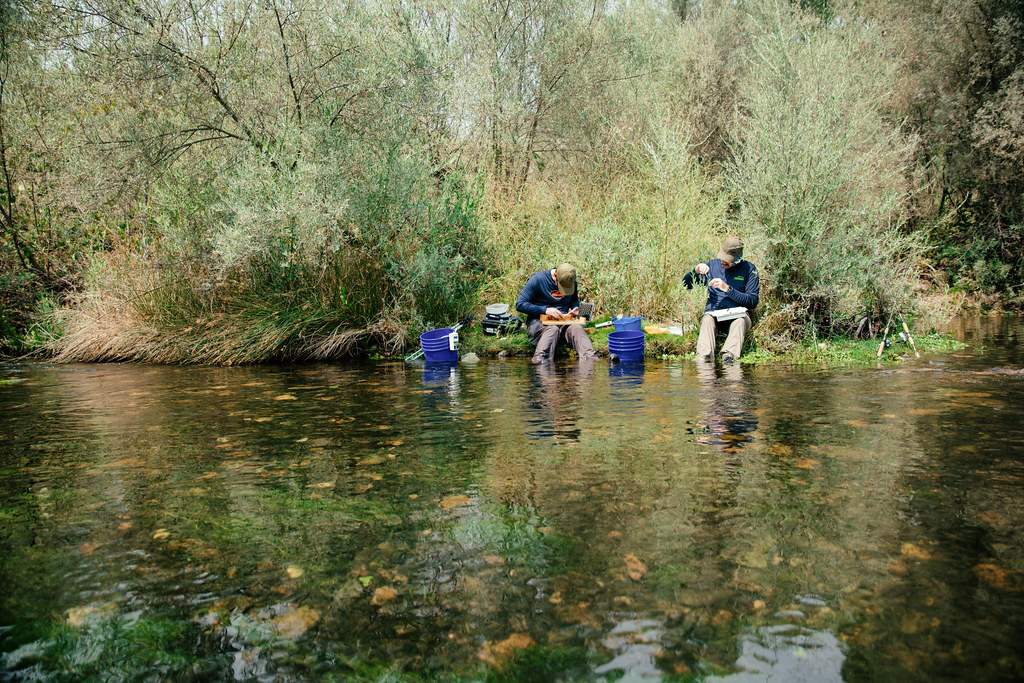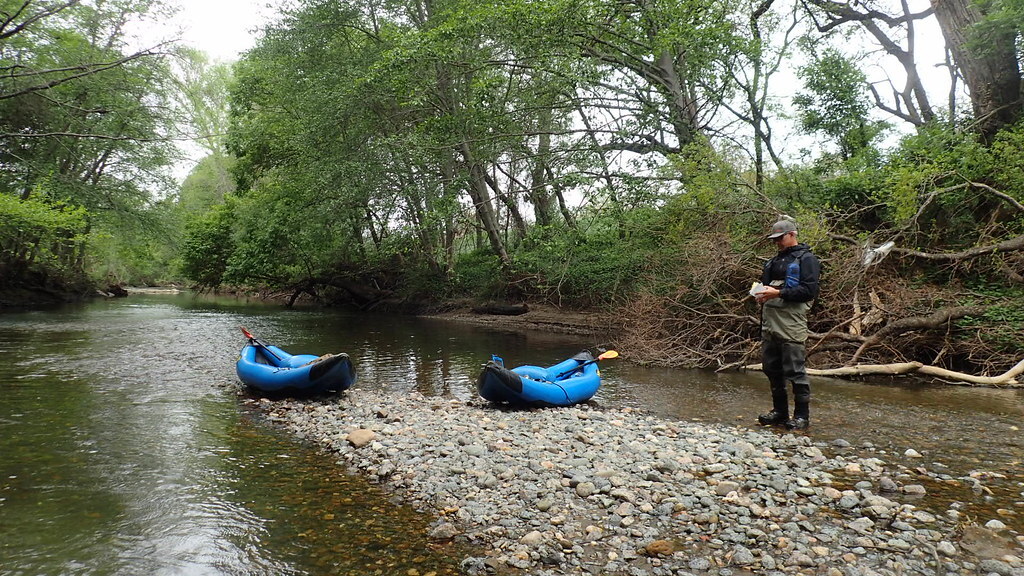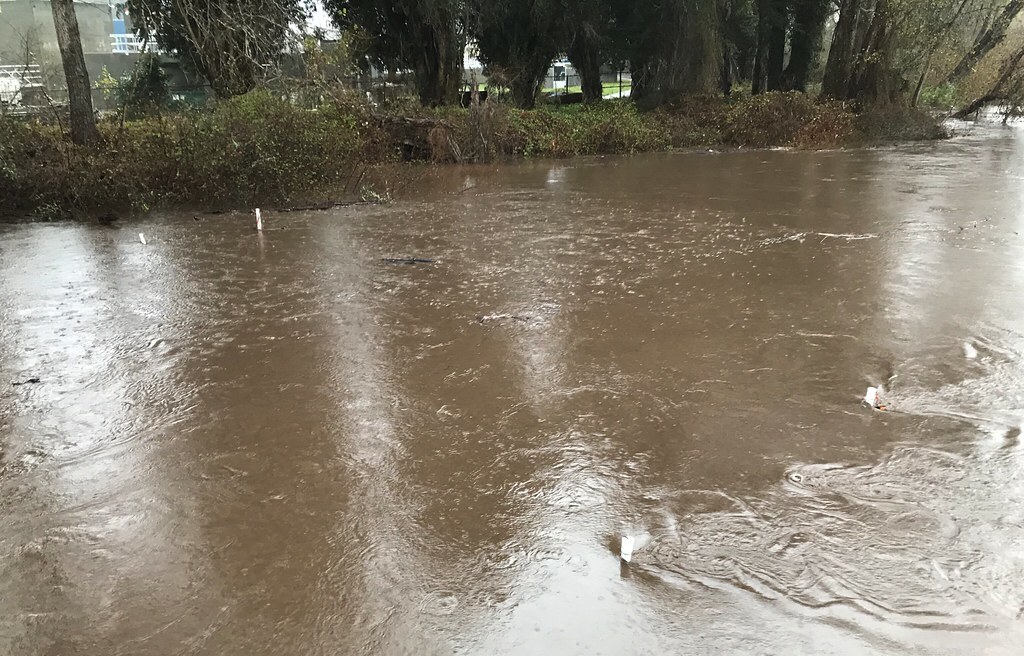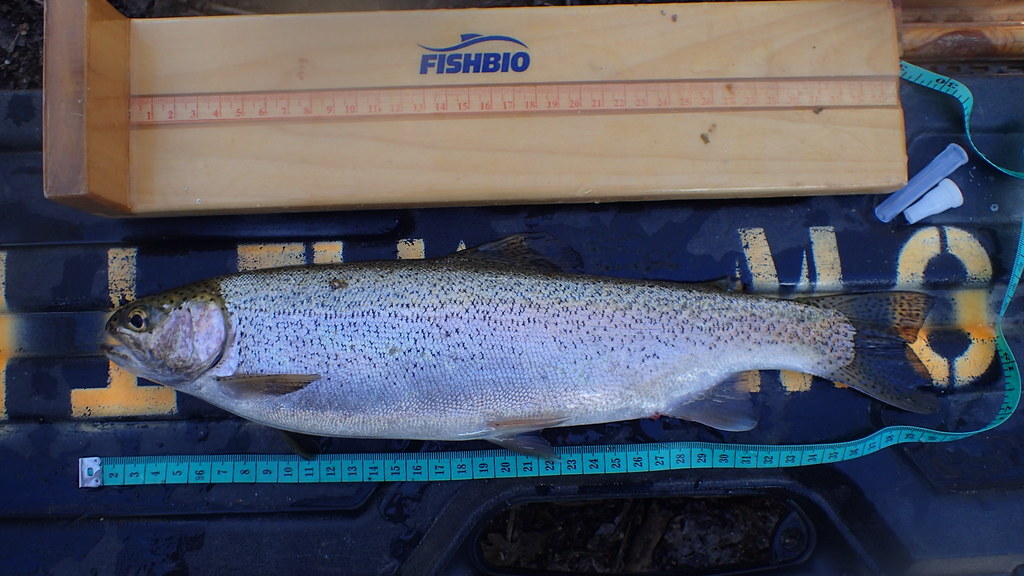Nevada Fish Report
San Joaquin River Fish Report for 2-22-2021
San Joaquin River Fish Report for 2-22-2021
Advancing Steelhead Monitoring In The San Joaquin Basin
San Joaquin River - Stockton, CA

Photo Credit: Courtesy of FishBio
by FISHBIO
2-22-2021
Studying steelhead (Oncorhynchus mykiss) populations in the rivers of California’s Central Valley has long challenged scientists and managers due to the species’ diverse and complex life history. Although recent initiatives such as the Central Valley Steelhead Monitoring Program (CVSMP) have sought to improve our understanding of steelhead in the Sacramento River Basin, no such concerted efforts have been developed for the San Joaquin River Basin. To begin addressing this gap, the Delta Science Program recently hosted a virtual workshop entitled Monitoring Steelhead Populations in the San Joaquin Basin. Over 200 participants, including experts from state and federal agencies, academia, NGOs, and private consultancies, came together to learn about current steelhead monitoring programs in other watersheds, assess the status of ongoing steelhead monitoring in the Central Valley, and identify opportunities for interagency and stakeholder partnerships to implement an efficient and sustainable steelhead monitoring plan for the San Joaquin Basin. By identifying key gaps in knowledge and defining current management challenges, the workshop outcomes will be used to help develop and design an improved approach to steelhead monitoring in the long overshadowed southern half of the Central Valley.
The first day of the workshop focused on management challenges and existing steelhead monitoring frameworks in other watersheds. Common “lessons learned” from ongoing monitoring in the Columbia and Russian River basins included that no one method or approach to sampling works perfectly all the time, but a suite of approaches such as weirs, rotary screw traps, snorkel surveys, PIT and acoustic tags, and genetic analyses can be used together to improve our understanding of steelhead populations. One presentation highlighted the homogenizing effect of 70 years of hatchery steelhead production, which has reduced variability in migration timing and, potentially, the ability of fish to adapt to environmental change. Another presentation discussed recent developments in the understanding of genetic control of migratory behavior. Although it isn’t possible to use genetics to definitively distinguish whether an individual fish is, or will become, a migratory steelhead or a rainbow trout (the resident form of the species), examining higher level genetic patterns can provide valuable insight into diversity, connectivity, and adaptation of populations. Finally, a discussion of statistical models of Central Valley steelhead life-history expression described an effort to explain variation in migratory behavior among different rivers, and discussed the need for studies to refine the relationships between temperature, flow, food, and growth, as well as model the effects of environmental change.
The second day of the workshop described ongoing and upcoming steelhead monitoring efforts in the Sacramento River and San Joaquin Basin, highlighting some of the successes and challenges encountered, and emphasizing the need for efforts distinct from Chinook salmon (Oncorhynchus tshawytscha) monitoring programs. Many of these efforts rely heavily on PIT and acoustic tags to track steelhead smolt movement, providing insight into their survival and migratory behavior. While several steelhead monitoring and management efforts exist in the Central Valley, there was general concern expressed during discussions about their “piece-meal” nature, highlighting a major need for better coordination to achieve more consistent, spatially balanced monitoring. Participants agreed that these problems should be addressed by interagency relationships and a consensus-based comprehensive data framework to address uncertainties such as total adult steelhead abundances, population structure, life-history diversity, juvenile survival and movement, and the effects of hatcheries on natural steelhead population success.
The final day of the workshop concluded with an exploration of analytical approaches to measure the impacts of management actions. Because similar initiatives have been undertaken to manage Chinook salmon in the Central Valley, several presentations discussed developing monitoring frameworks and adaptive management plans for this species. Representatives from the Central Valley Project Improvement Act (CVPIA) Science Integration Team highlighted the importance of structured decision-making to evaluate tradeoffs of management alternatives and inform an effective adaptive management process, which could be applied to San Joaquin Basin steelhead populations. Another presentation discussed a six-year telemetry study of juvenile steelhead in the south Delta, and concluded that although telemetry studies are expensive and logistically challenging, they can generate rich datasets that may be used to evaluate the impacts of management actions directed at steelhead recovery. Finally, otolith research was discussed as a means to investigate the origins, movement, and life history of an individual fish.
Following the presentations on each of the three days, participants were divided into breakout groups for facilitated discussion and brainstorming. This process provided useful insights and ideas that will inform the development of a steelhead monitoring framework. Upon conclusion of the workshop, it was evident that participants were motivated to collaborate on efforts to better monitor and manage the steelhead populations of the San Joaquin Basin. Armed with a slew of critical insights, examples of successful methodologies, and potential solutions to common challenges, scientists, managers, and other stakeholders can now get to work to create a comprehensive plan, with the goal to better monitor the steelhead populations in the Central Valley and evaluate the efficacy of specific recovery actions. Fact sheets of background information on the material covered during the steelhead workshop are available on the Delta Stewardship Council events website, where recordings of the presentations will be made available in the near future.
FISHBIO is a dedicated group of research scientists, engineers, and technicians that specialize in counting, tracking, and analyzing trends in fish and wildlife populations throughout the world. An expert staff, technical capacity, and state-of-the-art equipment make FISHBIO a trailblazer in aquatic research. For more information, please visit FISHBIO.com
Photos
More Reports
Keeping Tabs on Fish Health in the Calaveras River
Calaveras River
2-8-2021
The Calaveras River is home to several iconic and sensitive native California fish species, including the both forms of Oncorhynchus mykiss (steelhead and rainbow...... Read More
California Drought Update: Will the rain be enough?
Carmel River
2-1-2021
Everyone is taking a deep sigh of relief as wet weather finally returns to California. However, a burning question still...... Read More

www.NevadaFishReports.com © 2025. All Rights Reserved.
Website Hosting and Design provided by TECK.net
Website Hosting and Design provided by TECK.net
